The time for a lifeboat drill is not when the ship is sinking, it’s for when the ship is docked, steady, and safe. There are two reasons lifeboat drills are conducted; first, to familiarize yourself with what to do in case of an emergency. The second, and perhaps more important, is to make sure you are psychologically prepared for when disaster strikes. Pilots, astronauts, and many other professionals in high-risk industries do the same. Practicing good habits and preparing mentally for take-off, will ensure you are physically and mentally prepared to focus on what needs to be done in any situation.
While there may not be a physical danger to investing, there is financial danger. On average, the stock market experiences a correction (more than a 10% drop) every other year. Which means, as an investor, you will most likely experience a correction or crash at one point or another. That’s why it’s so important to do your own version of a lifeboat drill so you’re mentally prepared for when the inevitable correction occurs.
There is a plethora of things to consider when doing your drill, here are a handful of things we recommend, to help get you started:
- Calculate how much cash-in-hand you need to ride out the inevitable market corrections.
- Figure out your ideal buy-in levels for best-in-breed investments trading at discounted levels.
- Assess your risk tolerance when buying investments.
One of the most important components to a successful investment strategy is being prepared; for successful long-term investment planning; for potential financial setbacks; to invest in new opportunities; and, of course, to weather uncertain market conditions.
Being able to keep sight of your investment objectives during difficult times is often a determining factor in long-term success. Our team has the experience to help you stay prepared for whatever may lie ahead.
During times of turbulence and volatility, it is more important than ever for investors to work closely with financial professionals they trust to ensure their expectations and investments align with long-term plans.
Three Healthy Habits for Long-Term Investment Success
- Stay the course. Do not panic and pull out of the market during a downturn. The rallies you miss could significantly hurt your overall return.
- Take advantage of the downturns. By viewing market declines as buying opportunities, you can significantly enhance your long-term return potential when the market rebounds.
- Diversify your portfolio. Rather than trying to pick a single investment type and timing the market, diversifying across asset classes may decrease your risk and enhance long-term return potential.
Again, before making any investment decisions, we recommend speaking with a financial professional to reassess your financial situation and future goals. Keep in mind these strategies do not ensure profit and do not protect against loss.
Another benefit to running market drills when things are smooth and steady in your portfolio, is it will help you resist being a market timer. In short: market timing simply doesn’t work. By trying to time the market, you potentially miss out on rallies that could substantially improve your overall return and long-term wealth. You may incur expense and tax consequences that you would not otherwise have and ultimately could reduce return while increasing expenses. Trying to time the market is an understandable instinct, but it’s one that you need to control with practice.
Time in the market is far more important than timing the market. However, staying the course when confronting difficult markets doesn’t mean buying and holding passively. Using the drill-points listed above will help teach you how to use corrections to rebalance your portfolios and take advantage of opportunities such as tax swaps.
Ultimately, each person’s needs and objectives are different. This is why it’s important to customize your strategy to your situation. The best way to do this is to talk to a financial professional who can put together a strategy tailor-made to your individual lifestyle. We recommend against using robo-platforms and firms that have a set model for all clients. Portfolio performance is maximized when your unique objectives are taken into account.
At the end of the day, every market cycle has both up days and down days. Often, a few very good days account for a large part of the total return. Surprisingly, these good days are often in the middle of some of the worst ones. Staying invested ensures investments will be “in” the market on the good days. Unfortunately, consistently predicting which days will move the market up or down, though, is virtually impossible–not to mention potentially costly. For example, a hypothetical $10,000 initial investment in the S&P 500 Index held over the entire period of January 1, 1998 through December 31, 2007 would have grown to $17,756. Missing the 15 best days would reduce the ending value of that investment to $9,238 and missing the 25 best days over that 10-year period would result in an ending value of $6,539 (a loss of more than 34%). (Source Dalbar.com/Blackrock)
We believe that you should have a plan and then do a “lifeboat drill.” When markets inevitably decline, you can benefit rather than get hurt. Having worked with clients for more than three decades, I have seen the value in being a prepared investor and the devastation that occurs when someone is unprepared.
Our team has more than 250 years combined experience in helping clients develop a wealth management and planning strategy to benefit from good markets and bad. We are here to develop a customized plan based on your personal needs, goals and vision. We expect some very turbulent times ahead – will you be prepared?
Please feel free to contact me personally, or any one of our talented team members with any questions or concerns. There is no cost or obligation when it comes to helping you get the answers you need. We are here for you; your vision is our priority.
Randy Carver, CRPC®, CDFA®, is the president and founder of Carver Financial Services, Inc., and is also a registered principal with Raymond James Financial Services, Inc. Randy has more than 32 years of experience in the financial services business. Carver Financial Services, Inc. was established in 1990 and is one of the largest independent financial services offices in the country, managing $2.3 billion in assets for clients globally, as of November 2021. Randy and his team work with individuals who are in financial transition as a result of divorce, retirement, or the sale of a business. You may reach Randy at randy.carver@raymondjames.com.
Raymond James and its advisors do not offer tax or legal advice. You should discuss any tax or legal matters with the appropriate professional. The information contained in this report does not purport to be a complete description of the securities, markets or developments referred to in this material. The information has been obtained from sources considered reliable, but we do not guarantee that the material is accurate or complete. Any information is not a complete summary or statement of all available data necessary for making an investment decision and does not constitute a recommendation. Any opinions expressed are those of Randy Carver and not those or RJFS or Raymond James. Expressions of opinion are as of this date and subject to change without notice. Links are being provided for information purposes only. The S & P 500 index is comprised of approximately 500 widely held stock that is generally considered representative of the US Stock Market. It is unmanaged and cannot be invested in directly. Past performance is no guarantee of future results. Investing involves risk and you may incur a profit or less regardless of strategy selected. Prior to making an investment decision, please consult with your financial advisor about your individual situation.

 Why It Doesn’t Matter if there is a Market Crash
Why It Doesn’t Matter if there is a Market Crash











